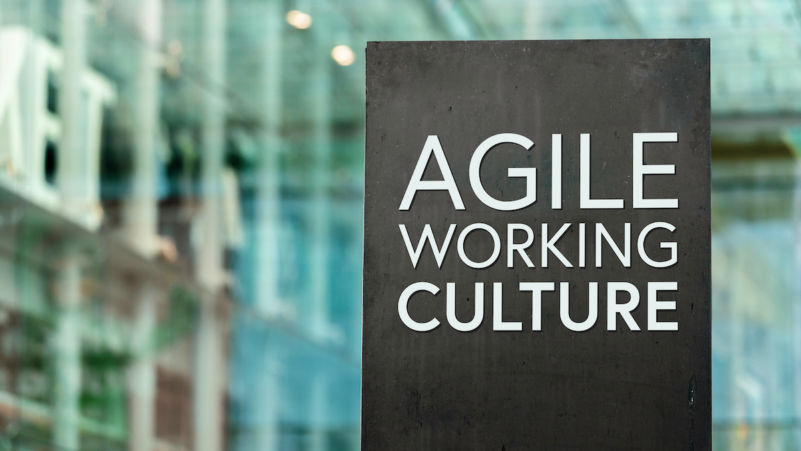Last Updated: September 2024
‘Plans are worthless, but planning is everything.’ These were Dwight Eisenhower’s words in a speech in 1957. It’s worth remembering them as businesses grapple with the prospect of an imminent recession. Yes – you can make a plan. But the world is so uncertain that it’s unlikely to turn out as you expected.
These are perfect conditions for a more agile approach to the way you operate. We’ve talked before about adopting agile techniques in your business. But what about your culture? Could you take these techniques and apply them directly to culture? We think you can. Furthermore, if you can bring agility to culture, it will make your business more able to weather future storms.
What does it mean to have an agile culture?
It helps to start with an understanding of culture. The Oxford dictionary defines it as ‘The training, development and refinement of mind, tastes and manners.’ Interesting how it emphasises training and the shared behaviours implicit in tastes and manners. The Merriam-Webster definition is, ‘A way of thinking, behaving and working that exists in a place or organisation’. This is more explicit. Culture is all about the way people behave.
An agile culture is nimble on its feet. It’s not set in stone – it evolves and adapts as time passes. The Agile Manifesto was developed in response to ‘Waterfall’ project management which was perceived as too rigidly set on delivering against a detailed plan. This meant the responsibility of the outcome was on the quality and granularity of the plan. But it’s impossible to have a plan when you don’t know what will change.
In contrast to Waterfall, Agile is an iterative approach to project management. What does this mean? Making progress through successive refinement. Rather than being fixed on a specific end goal, it allows projects to adapt to change.
Self-organised teams are more productive
It’s possible to take agile principles and apply them to culture. Get a room full of your people. Say to them, ‘Hands up if you like being managed?’ My guess? No one will put up their hands. Then ask them to think about something they’re most proud of at work. Was that work a result of something a manager asked them to do? Or was it something that happened because they had the freedom to be creative? Another educated guess. Everyone will pick the latter.
People don’t like being managed. One of the agile principles is that self-organised teams do the best work. You can only enable this by putting a structure in place that allows the team to decide what they will achieve in the next timeframe. The structure we recommend to our clients is OKRs, and as part of this, teams can work out what they’re going to do to help the organisation achieve its goals.
Progress is made by breaking work down and measuring it
We recommend that our clients use job scorecards and set team KPIs. These can be broken down into steps that are met progressively, alongside using OKRs as a framework to deliver change. The steps may be to improve a KPI or progress on change initiatives that support the company’s purpose. The team comes together to ask, ‘What are we going to do, and how are we going to do it?’
Get into a 90-day working rhythm (another facet of agile). Maybe you say, ‘Here’s a change we want to investigate.’ For the first month, we’ll evaluate options and pick the best one. We’ll roll out and do any needed training or changes in month two. In month three, the change will be in place, and we’ll measure its impact.’ Then at the end of the quarter, you’ve got some data which will demonstrate improvement.
For this to work well, systems need to be in place to track and measure progress. And an essential feature of agile cultures is a constant reflection on how to get better. Formal reviews should happen every quarter against the OKRs, looking at what’s been achieved and what can be learned.
Bringing simplicity to workloads

Agile cultures will maximise the amount of work NOT done. Teams come together to say, how do we simplify what we do? We know what we’re trying to achieve. So how do we have the biggest impact? What is it that we’re spending our time on that’s unnecessary? This is where top-down guidance is often needed. For example, the team may not be able to work out where certain customers are unprofitable on their own. They need supporting data.
Working in this way is more satisfying. Instead of feeling overwhelmed with busy work that’s getting them nowhere, people will start to see real progress. Get them into a position where they can make more impact with less time and measure it so they can see the results. This is how you drive up productivity in your teams.
Technical excellence that relies on expertise
Technical excellence is prized and valued in agile cultures. Many of our clients have ‘Mastery’ or ‘Curiosity’ as a core value. There’s a drive to encourage their teams to become experts in their work.
This will only happen if you create space for it. It’s a top-down feature, and senior managers must lead by example. They need to create some context and put structure in place – a mechanism for measuring value. This might be NPS to tap into customer feedback. Or it might be an amount of work that needs to get done – support tickets or software. Whatever you choose, there should be curiosity and a desire to improve in that area.
Removing needless bureaucracy
When I worked for Shirlaws, one of my colleagues told me about a business he’d work in where everyone had to put the number 22 in the top corner of an expense form. Otherwise, it wouldn’t get paid. No one had any idea why. It was one of those weird anachronisms that get embedded in organisational practices.
This can be intensely irritating. It’s easy to create rules. And much harder to remove them. Agile cultures steer away from bureaucracy by constantly reviewing what’s holding people back. The way meetings happen in your organisation can be a case in point. With some of our clients, we’ve recommended an amnesty where all meetings are cancelled. They are only re-booked if everyone agrees that they’re necessary – which is also why we suggest giving every session a rating on a scale of 1 to 10. Then you can see where you need to improve.
Prioritising internal customer satisfaction

A central tenet of agile is ensuring customer satisfaction through early and continuous delivery. And I can say with complete conviction. There is no company where external service will be better than internal customer satisfaction. This is where you start.
Put in place systems that can measure internal customer satisfaction. Teams who are self-managed and want to deliver value will put their own processes in place to measure the level of service they’re giving their internal customers. They’ll also look to improve on this.
In the past, I’ve put in place systems to say thank you. As they’ve been rolled out, people get company swag to say thank you for a well-done job. This will show you where praise is being given. You can then map out your organisation and colour code managers by the volume of praise for their teams. Very quickly, you can see the managers who aren’t agile or have no culture of accountability in their teams. Like any 12-step programme, you start with the truth (the brutal truth, as Jim Collins puts it). To fix it, you need data, and you need to track it.
As a leader, you can say here’s the context. This is where we’re starting from. And this is how we will adapt agile philosophies to our culture. But this will only be successful if you put in the right structure and take decisive action.
Written by business coach and leadership coaching expert Dominic Monkhouse. Contact him to schedule a call here. You can order your free copy of his book, Mind Your F**king Business here.

